How Has the Idea of the Panopticon Shaped Smart Cities Surveillance?
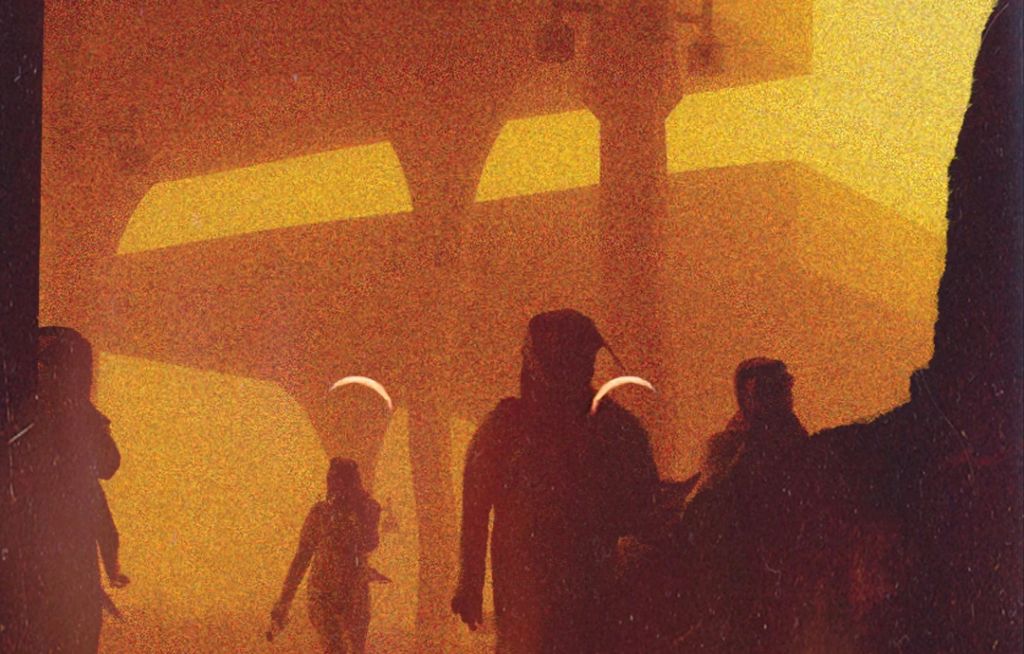
ACT 1: Surveillance in the Shadows
An early morning at the entrance to a building at the Line. It is the first day of setting up a security point, and the atmosphere is tense as the messages have been spread around inviting all the people to come to the gate to record their personal data to the system. Citizens are slowly getting out of the line, smoking and discussing the security scanning point.
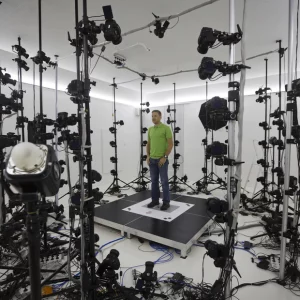
CITIZEN: [exhales a puff of smoke] So, what’s the deal with this security point? (Fig 2)
An architect who is standing nearby overhears the conversation. He steps in.
ARCHITECT: [Takes a drag from her cigarette] Well, it’s a crucial component of our smart city project – “We learn to operate the city as a meta-interface”(1). It will use a body scanner for the access to the building. Like that we can assure safety for our community by tracking and identifying members of our community. (Fig 3)
In the midst of their conversation, someone whizzes by on a high-tech bike that seems to be floating just above the ground.
ARCHITECT: [surprised] Did you see that?! That cyclist just rode on top of our Silver Line!
CITIZEN: [shrugs] Oh, he’s done it twice since I got here this morning. It’s the new way to commute.
The cyclist stops sharply. It’s an activist with his friend who has a video camera. They heard that it is the first day of setting up the scanners, so they were eager to confront the architect of the project.
ACTIVIST: [voice rising] Stop! This is a breach of our privacy and a violation of our rights! (Fig 4)
The Architect and the Citizen turn to look at the Activist. The tension rises.
ACTIVIST: [getting agitated] This is a controlled city, and it’s all in the name of convenience. But what about our freedoms?
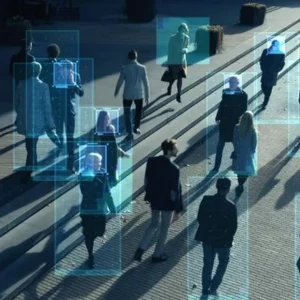
ARCHITECT: [calmly] We’ve discussed this with you already. It’s about security and efficiency only. We need to evolve with the times. “One of the things the pandemic has revealed is that the absence of control, authority, and competency is very real and dangerous.” (2)
As the argument continues, a drone overhead captures their conversation and sends it to a control center.
CITIZEN: [curious] What’s going on here?
ACTIVIST: [turning to the Citizen] We’re trying to prevent this dystopia from being built! “The lines between public and private, personal and social are blurred, creating an environment of constant surveillance and manipulation”. (3)
ARCHITECT: [annoyed] It’s not a dystopia, It’s a progress. “It is how any complex, adaptive system recognizes itself and its own capacity for deliberate self-composition.” (4)
The Citizen listens and then offers a suggestion.
CITIZEN: [calmly] Both of you have valid points, but maybe there’s a middle ground. Smart cities can be controlled and efficient without sacrificing our individual rights.
The atmosphere gets even more tense.
ARCHITECT: [pauses] This is not my call. I’m just the architect. I will call my boss.
The Architect takes out his phone and makes a call.
ARCHITECT: [on the phone] Hello, we have a situation here. Can you come to the construction site?

CEO: [on the phone] You can’t expect me to come. I will send some security instead.
The Activist takes the opportunity as the CEO is not interested talking to the citizen and tries to get into the building with his friend. The body scanner refuses the access and makes a loud noise.
“UNAUTHORIZED ACCESS”
The drone sends the recording livestream to the CEO’s office. He sees that the commotion is growing and the activist is gaining audience. He calls the security and is ready to step in. (Fig. 5)
END OF ACT 1

ACT 2: Balancing Privacy and Progress
The Activist turns to the citizen.

CT Scanner for carry-on bags. 2019
ACTIVIST: [concerned] Do you see what they are doing to us? “Control is short-term and of rapid rates of turnover, but also continuous and without limit” (5)
ARCHITECT: [enthusiastic] “Is it at all surprising that the philosophies based on “biopolitical critique,” which hold that any governance of bodies is fundamentally authoritarian and illegitimate, fail so miserably in interpreting what is truly at stake?” (6)
Two men are approaching. One is the CEO of the project, the other one a security guy. They exude an air of authority.(Fig 7)
CEO: [stoic] What’s going on?
The activist points the camera directly at the CEO and addresses him.
ACTIVIST: [lividly] Your drones already know.
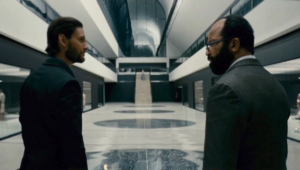
Created by: Jonathan Nolan and Lisa Joy
CEO: [calm but sharp] The project aims to transform society for the better. Increased connectivity, data sharing, and surveillance are essential for efficiency and security, because “By giving people the power to share, we’re making the world more transparent.” (7) (Fig 8)
ARCHITECT: [passionate] “But how does the uneven and inequitable distribution of testing and care demonstrate just how collective the risk really is.” (8)
CEO: [authoritative] As the supervisor of this project, it is my duty to ensure the best quality of life for our future citizens. These technologies will make their lives safer and more convenient.
ACTIVIST: “The world today is no theater where actions and feelings are represented and interpreted, but a market on which intimacies are exhibited, sold, and consumed.” (9)
CEO: [resolute] The world is evolving. We must adapt. Our citizens will be safer, more productive, and lead better lives. “The thing I really care about is the mission, making the world open.”(10)
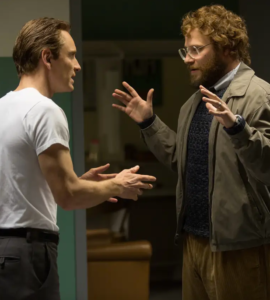
Director: Danny Boyle
CITIZEN: [diplomatic] Can’t we have progress without sacrificing privacy? “Compulsion for transparency flattens out the human being itself, making it a functional element within a system.” (11)
CEO: “When you give everyone a voice and give people power, the system usually ends up in a really good place.” (12)
ACTIVIST: [firm] You want us to think that we have power but in the end the only thing we have is our voice. Sacrificing privacy is not the answer! We should find a way to achieve our goals without compromising our freedoms. (Fig 9)
ARCHITECT: “The deeper problem with the current system is less sensing than over-individuation itself.” (13)
CEO: [unyielding] It’s a small price to pay for progress, don’t be afraid of this. “Our full mission statement is to give people the power to build a community and to bring the world closer together. That reflects that we can’t do this ourselves, but only by empowering people to build communities and bring people together.” (14)
The Activist wants to respond but is cut short by the security guy. The CEO shares a glance with the security and they start to move in and disperse the crowd.
END OF ACT 2
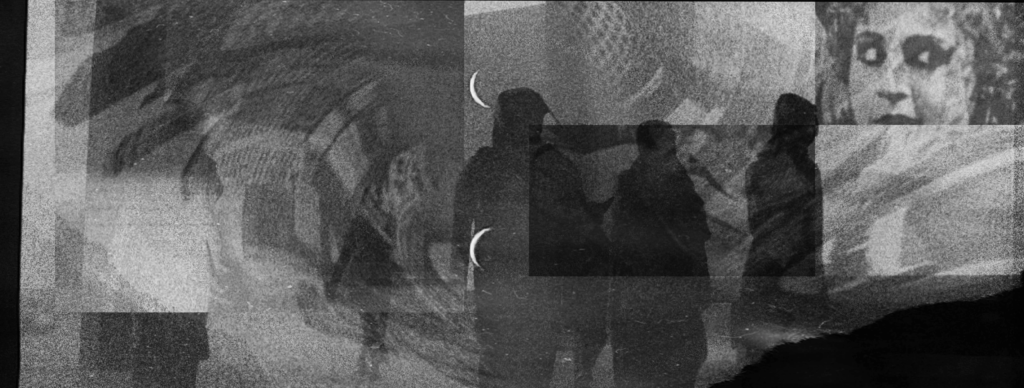
ACT 3: Technological Turmoil
The tension reaches its peak as they are ordered to leave the area immediately. The CEO starts to walk away. The advanced body scanner at the security point malfunctions, emitting a blinding light and an ear-piercing sound. The drone overhead, which has been monitoring the scene, starts to malfunction as well, spinning uncontrollably in the air. “HOSTILE ENVIRONMENT DETECTED. INITIATING SHUTDOWN”.
ACTIVIST: [shouting over the chaos] What’s happening?
ARCHITECT: [panicking] Something’s gone wrong with the scanner!
CITIZEN: [concerned] Look at the drone!
CEO: [irritated] Don’t worry, everything is under control. This is is just a small inconvenience I can override the system!
As the CEO walks to the building the scanner continues to emit blinding light, disorienting everyone at the site. As they struggle to regain control of the malfunctioning technology, the body scanner’s blinding light and the drone’s erratic movements draw the attention of the crowd that has gathered. (Fig 11)

Directors: George Ogilvie, George Miller
BYSTANDER 1: [shouting] What’s happening there?
BYSTANDER 2: [concerned] This doesn’t look safe!
All devices come to a grinding halt. The lights go off. There is darkness except for the silver lining at the top.
ACTIVIST: [addressing the crowd] This incident highlights the risks of putting too much trust in technology.
Is the price of privacy’s violence worth the cost of progress?
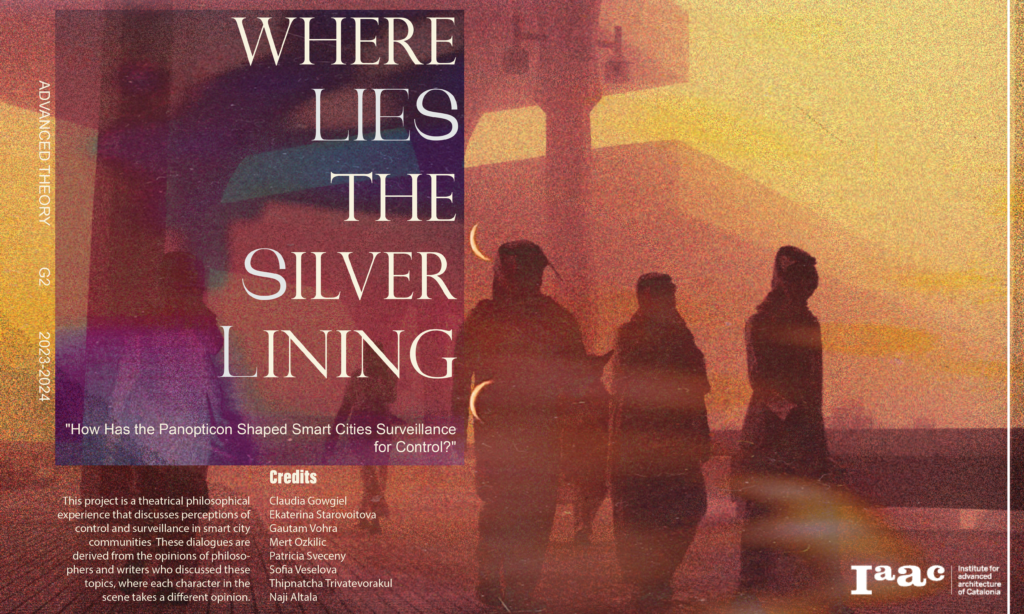
References:
- (1) Benjamin Bratton, “Architectural Design”, p.93
- (2) Benjamin Bratton, “The Revenge of the Real”, p.54
- (3) Gilles Deluze, Societies of Control, p.5
- (4) Benjamin Bratton, “The Revenge of the Real”, p.109
- (5) Gilles Deluze, Societies of Control, p.6
- (6) Benjamin Bratton – Preface – Revenge of the real, p.13
- (7) Zuckerberg, M. , Zuckerberg’s letter to investors, 2012
- (8) Benjamin Bratton – Preface – Revenge of the real, p.12
- (9) Byun Chul Han, The Transparent Society, p.34
- (10) Singel, R. , Mark Zuckerberg: I Donated to Open Source, 2010
- (11) Byun Chul Han, The Transparent Society, p.31
- (12) Shephard, A. Trapped in the Dorm Room, Mark Zuckerberg interview, 2018
- (13) Revenge of the Real, Benjamin Bratton, p.55
- (14) Zuckerberg, M. Bringing the World Closer Together, 2022
Bibliography:
- Benjamin Bratton, “iPhone City (v. 2008)”, Digital Cities AD: Architectural Design, ed. Neal Leach, 79:4, 2009
- Benjamin Bratton, “The Revenge of the Real: Politics for a Post-Pandemic World”, 2021
- Gilles Deluze, “Postscript on the Societies of Control”, Paris: Editions Minuit, 1990
- Byun Chul Han, “The Transparent Society”, Stanford University Press Stanford, California, 2015
- Zuckerberg, M. , Zuckerberg’s letter to investors, 2012
- Singel, R. , Mark Zuckerberg: I Donated to Open Source, 2010
- Shephard, A. Trapped in the Dorm Room, Mark Zuckerberg interview, 2018
- Zuckerberg, M. Bringing the World Closer Together, 2021

